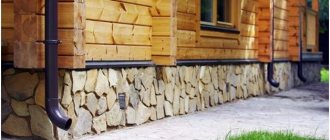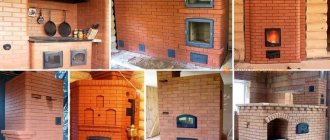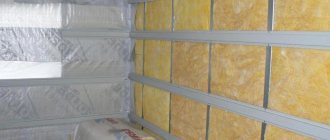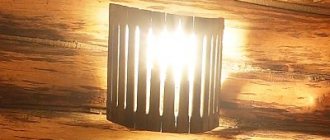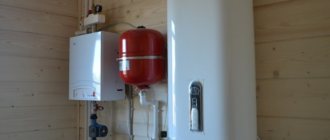Boiler or furnace: differences in designs
Sometimes a sauna boiler is called a stove; confusion occurs when it comes to the simplest products that burn wood or briquettes. In reality, boilers are more complex: a stove with a chimney is complemented by a tank for heating water and (sometimes) a heat exchanger.
To maximize the effect of bath procedures, a visit to the bath necessarily includes washing before the steam room and rinsing after it. Installing a tank allows you to get a productive water heating device; however, the modification increases the cost slightly.
The sauna boiler comes with a water tank. It is especially practical where the steam room and washing compartments are combined. It is able to provide rapid heating of water thanks to a heat exchanger. To ensure maximum heat transfer, water circulation occurs in different directions. Structurally, the tank can occupy several positions, but it always makes the most of the potential of the heating equipment.
Construction of a wood stove with a tank Source aviarydecor.com
Pouring the foundation
The foundation is the basis of the entire building. There are increased demands placed on him. The foundation must be strong and reliable, capable of supporting the heavy weight of the building.
The construction of the foundation is carried out according to the scheme.
- Dimensions are applied to the base. Pegs are driven into the corners, and a thread is pulled over the stakes for ease of orientation. The size of the markings corresponds to the dimensions of the oven.
- Prepare the pit. Depth – 60-70 centimeters, the lower part is additionally expanded by 10 centimeters to the sides. The shape of the pit should be trapezoidal.
- A layer of sand 5-10 centimeters thick is poured onto the bottom. Broken brick or crushed stone is poured on top. Sand is also sprinkled on top. The thickness of the puff pastry is approximately 25-30 centimeters.
- Waterproofing is laid on top of the compacted brick with sand. Traditionally, roofing felt is used.
- Formwork is installed around the perimeter of the pit. A reinforcing mesh is installed in the pit itself.
- The formwork is poured with concrete. In this case, 10-15 centimeters are left to the top. They are necessary for leveling the surface and laying the base layer of bricks.
The foundation is allowed to settle and set. This period takes from 5 to 7 days, after which the formwork is removed. The voids are filled with gravel. Roofing felt is laid on top of the foundation. It is recommended to do waterproofing in two layers for reliable protection against groundwater leakage.
Design options for sauna boilers
The design differences lie mainly in the method of placing the tank and the volume of heated water. The classification covers four installation methods; they all have their own merits and are equally widespread throughout Russia.
Internal tank
The design, in which the water heating tank is located inside the furnace body, is interesting for the following features:
- There is no access to the tank from the outside; it is not visually visible. In most cases, the solution is typical for factory models.
- The internal location ensures maximum water heating speed when compared with other varieties. The container is in direct contact with the combustion chamber; Additionally, the housing prevents heat from leaking out.
- As a rule, such models have a small (25-30 l) volume. They are ergonomic, efficient and keep water warm for a long time.
Model with a compact internal tank Source dekoriko.ru
On the chimney, "samovar"
The water reservoir is located on the chimney, in close proximity to the stove (above it). The samovar tank is a practical solution for hot water supply with the following specifics:
- Heating occurs due to exhaust furnace gases, which significantly increases the overall efficiency of the device. The water remains hot both during combustion and for some time after its completion.
- The solution is considered environmentally friendly and economical if you need to organize hot water supply for a periodically used room.
- The water heats up more slowly than in a design with an internal tank, but the heating speed is sufficient for comfortable use. Productivity depends on the power of the stove and the volume of the tank.
- Heating occurs due to the fact that thermal energy comes not only from the walls of the chimney, but also from the metal body.
- The efficiency of the device can be increased: the closer the tank is located to the furnace (the source of hot furnace gases), the faster the water temperature rises.
Medium volume samovar tank Source prom.st
- The design is reliable, easy to install and maintain. The tank is made of stainless steel and has a rectangular or round shape (at the base).
Remote with heat exchanger
The steel tank is located outside the sauna stove, but is connected to it by a heat exchanger built into the firebox. The system can be described as follows:
- The flame in the firebox first heats the coolant in the heat exchanger (a water circuit built into the firebox), and only then heats the water in the tank.
- There are no restrictions on tank volume in the design. The heat exchanger coil is built directly into the firebox.
- The presence of an intermediate link is the reason for the rather slow rate of increase in water temperature (the slowest of all options).
- High-quality heat-resistant steel is used to manufacture the remote tank. The volume is selected based on the size of the room, usually 35-80 liters. Containers of increased volume (60-80 l) can be angular.
- In order for the water circuit to work with maximum efficiency, the tank is not moved more than 2.5 m from the stove.
Design with a remote tank Source aviarydecor.com
- Despite the slow heating, the remote design is popular. The fact is that if you install it in the washing compartment, you can additionally heat the room.
- The full heating time is affected by the volume of the container and the external temperature. With a volume of 80 liters, heating will take approximately 2.5-3 hours.
See also: Catalog of companies that specialize in engineering systems (heating, water supply, sewerage and others) and related work
Mounted (a type of remote)
A mounted boiler in a bathhouse has the following advantages:
- The metal container is attached to the furnace body, on the side or back, rigidly or using special connectors. Close proximity is the main feature of the design.
- Contact with the hot furnace body (steel, cast iron or brick) ensures a rapid increase in the temperature of the coolant.
- The design is simple in design and installation. It is manufactured as a separate component, so you can refuse to use it if you wish.
- Disadvantage of a metal tank: it is located near people, which increases the likelihood of careless touching and burns.
Wood-burning stove with a hanging tank Source oteplicax.ru
Due to which a manufacturer can produce cheap sauna stoves
Firstly, the size . The smaller it is, the lower the furnace power .
Therefore, in the lines of different manufacturers, the cheapest models will be the most compact. Secondly, the quality of the material . The best material for sauna stoves is high-chrome alloy steel. But it's expensive. If the same parts are made from structural steel , then the heat resistance and durability of the furnace will decrease, but at the same time the cost will also decrease, and with it the final price for the consumer. (Some manufacturers indicate that the firebox is made of steel with a high chromium content - you need to clarify what they saved on if the price is budget.)
Thirdly, the amount of material .
What if the manufacturer makes its stoves not from high-quality two-millimeter steel, but from millimeter steel? Metal consumption will be halved. The price will be lower. Of course, this stove will also last less. On a note! 2mm chrome alloy steel is better than 4mm structural steel.
We will not consider reducing the cost of work This is possible either by automating production, or by increasing the number of units of output, or by transferring production to third world countries.
Although... if you think about the option of
making a furnace yourself or with the help of a familiar welder (and even a stranger) - such a furnace usually turns out to be significantly cheaper than a factory one.
True, it can win in terms of durability, losing to factory ones in beauty - because usually for homemade products they use thicker steel (up to 1 cm), although not alloyed .
But if the owner of a bathhouse is quite satisfied that the stove will serve him for at most the next few years, then buying an inexpensive stove for a bathhouse becomes justified.
Therefore, let’s consider the options that companies and stores offer us before deciding to make something homemade or handicraft.
Types of boilers by type of energy carrier
Most private baths are modest in size and heated using a simple wood stove, often supplemented by a water tank. Wood-burning sauna boilers are classified as solid fuel units. The boiler is installed simultaneously with the stove during the construction of the bathhouse. Wood-burning models are often the work of their owners, unlike devices that run on another type of energy source.
Electric boilers
They are designed for heating any premises: country houses, apartments, dachas and other objects. The operating principle of an electric boiler is the same as that of a boiler. By design, there are two-circuit boilers (they simultaneously heat and supply hot water) and single-circuit boilers (they exclusively heat).
Compared to units using other types of fuel, electric boilers are safer and operate silently in automatic mode. They are distinguished by their neat dimensions and light weight. The advantages include simpler and cheaper connection, simpler operation. Most models are wall-mounted; they do not need a personal boiler room; installation is possible in any room.
Model of an electric boiler with a water tank Source teplodar.ru
For use in bathhouse conditions, it is important that electric boilers do not create harmful emissions; they do not require regular cleaning and the purchase of fuel. Despite its obvious environmental friendliness, an electric unit is far from the most successful option for a bathhouse; They are rarely used for the following reasons:
- High energy consumption.
- High demands on network stability, as well as on the quality and reliability of electrical wiring.
An electric boiler is chosen if the bathhouse is located in the basement of the house or adjacent to it. In a free-standing bathhouse, limit yourself to a boiler or choose a compact single-circuit boiler to provide hot water supply for the washroom.
Gas
A gas boiler for a bath is becoming a competitor to traditional wood-burning stoves. Installing such a unit is economically beneficial not only in gasified areas. If you want to equip a bathhouse in your country house, but there is no mains for connection nearby, the solution may be a device that can run on liquefied gas rather than natural gas.
Gas boilers are reliable and economical Source 2proraba.com
Principle of operation
And the operation of these devices is no different from their analogues. The oven consists of several main parts:
- furnace body;
- separate compartment for burning wood;
- an ash pan, which is located in the lower part of the stove and serves to collect ash and as a blower to increase draft during the initial ignition of wood;
- grate. It is installed above the ash pan and serves to protect the furnace body from exposure to high temperatures and unhindered pouring of ash into a container for collecting it;
- a screen that is installed in some models and is designed to prevent the direct passage of heat into the chimney. Heat is reflected from the screen, passes through the inside of the stove and only then enters the upper compartment and passes to the chimney, heating the stones;
- exhaust gases exit into the chimney pipe and are released into the atmosphere;
- On top of the furnace body there is a grid for laying stones. When wood burns, the stones heat up. Anyone can raise the temperature in the steam room by splashing several ladlefuls of aromatic infusion or water on the heater.
Making a wood boiler
If you know how to use a welding machine, an angle grinder and have spatial imagination, a homemade boiler for a bathhouse can be a budget alternative to purchased models. Self-assembly does not involve complex techniques and does not require expensive materials.
Diagram of a boiler with a water circuit Source sitysun.ru
Mounting and installation
Sauna stoves with a separate sink and steam room from well-known brands are usually installed by employees of the manufacturer or according to the individual instructions supplied.
But you can also install it yourself using the following approximate algorithm and diagram:
Layout of the furnace and remote tank:
3 different connection diagrams for elements:
Scheme 1
Scheme 2
Scheme 3
Installation tips:
- The design of the furnace does not require a special foundation, but the foundation for it must be prepared. It is performed using brickwork. The base area is 70x70 cm, the height should be more than 10 cm.
- Cover the walls adjacent to the stove using bricks and insulate them with heat-insulating materials.
- If you plan to heat the stove from the waiting room, make a hole “with a reserve” in the partition between it and the steam room.
- On the prepared base, lay a layer of heat insulation material and an iron sheet on which the furnace structure is installed. The firebox is inserted into the partition.
- Fill the stove with stones.
- Cover the floor boards with a metal apron, which is secured over a sheet of thermal insulation.
- Mount the decorative trim on the front section of the firebox, install the ash pan and the door.
- Install the pipe. If the roof is flat, the height of the pipe should be more than half a meter, if it is gable - more than one and a half meters.
- Weld a metal screen to the predetermined contact point between the ceiling and the pipe. This part reliably connects the two halves of the pipe and protects the ceiling from elevated temperatures.
- The water tank, as well as the heat exchanger, should be installed simultaneously with the main pipe.
How to choose a boiler for a bath or sauna
If you find it difficult to determine what tank size will be optimal for the conditions of your bath, it is useful to use the following considerations:
- To steam one broom, it takes at least 10 liters of hot water, for two you will need 20 liters.
- For comfort, every connoisseur of bath procedures needs at least 15, and preferably 20, liters of heated water.
If a company of four people gathers, then the tank volume should be at least 80 liters (based on two brooms).
For the unit to operate efficiently, it is also important to take into account personal needs and correlate them with the following parameters:
- Dimensions and power of the boiler, what volume of the steam room it is designed for.
- From which room according to the project will the steam room be heated?
- Materials of the device, especially the housing.
- Type of heater, volume of stones.
- If you are planning a gas bath, one of the criteria will be gas pressure, as this is important for the safe operation of the device.
- Will you line the container with stone, tile or brick to better retain heat and protect you from burns.
Modern oven with a heat exchanger and an external tank Source ukr.bio
Preparation of the solution
It is not recommended to use cement mortar for masonry. It is not heat-resistant and does not tolerate temperature changes well. Experts recommend starting a mixture based on clay and sand.
There are no exact proportions for the composition. Focus on consistency.
- Clay is used red or fireclay. No large inclusions.
- The material is filled with water and left for 24 hours. After this, knead until soft. The clay should stick slightly to your hands.
- After this, sand is introduced, previously sifted through a sieve.
- The composition is mixed until homogeneous.
The readiness of the solution is determined by dipping a stick into it and shaking it. If the remaining layer exceeds 3 millimeters, then sand is introduced. If less than 2 – clay. The optimal layer is 2 millimeters.
Briefly about the main thing
Many owners of baths and saunas consider it optimal to use a boiler, that is, a stove supplemented with a water tank. This combination is practical and functional; it provides not only hot water supply for any bath processes, but also helps to heat the premises.
There are several ways to position the tank, based on whether it will be built-in or external. To a large extent, the choice of boiler model is influenced by whether gas, electricity or wood will be used as fuel. The volume of the tank is selected depending on the number of users.
Ratings 0
Construction technology
Construction of a furnace is not a quick process. The work takes on average at least 1 month. The period directly depends on the qualifications of the specialist and the speed of installation. Most of the time is spent preparing the foundation and hardening it.
The main stages of work are:
- Preparation and pouring of the foundation;
- Preparation of tools and solution;
- Construction of the masonry of the main part of the furnace;
- Construction of a chimney;
- Finishing work.
All stages are carried out sequentially, observing the time limits for hardening of the solution.
3rd place: “TMF Geyser 2014 Inox vitra” anthracite, with heat exchanger
hit
Wood stoves
Sauna stove "TMF Geyser 2014 Inox vitra" anthracite, with heat exchanger
39 299 ₽
+ 1965 bonuses?
When purchasing this product, bonus rubles will be credited to your Bonus account Bonuses are activated after 24 hours
In installments from RUB 3,270/month.
Add to cart Found cheaper?
The bronze award in our top stoves for Russian baths was won by the product of the company that won the People's Brand 2014 award. The anthracite TMF Geyser 2014 Inox Vitra model is equipped with a built-in heat exchanger that provides light steam. To bring it to the required conditions, a system of two heaters is used: open and closed.
The oven has a height of 900 mm, a width of 500 mm and a depth of 840 mm; it has the following technical characteristics:
- Steam room volume: ranging from 8 to 18 m3.
- The total weight of the stove with heater is 129 kg; own weight – 66 kg.
- The maximum length of logs placed in the firebox is 500 mm.
The described sample is made of heat-resistant stainless steel, and the main thermally loaded elements have an equal thickness of 3 mm. This ensures the durability and reliability of the design, which also has other advantages:
- The chimney is located in the center, which allows you to intensify the heating of the heater.
- A funnel with a dosing valve eliminates the possibility of flooding the internal heat exchanger.
- The temperature of the open heater allows the possibility of soaking brooms.
Reviews about one of the best wood-burning stoves for saunas in our rating are the most positive. Users note the compactness and relatively low consumption of firewood. Among the shortcomings, buyers complain about the inflated price, as well as about the burning out of some samples immediately after the end of the warranty period.
Reviews of the wood-burning stove “TMF Geyser 2014 Inox vitra” anthracite, with a heat exchanger on Otzovik
Choosing material for a chimney in a bathhouse
The market offers a wide range of raw materials for the production of smoke exhaust structures; let’s briefly name each of them.
Asbestos cement pipe
It is low cost and easy to install, however, due to its porous structure it can accumulate condensate.
Black metal
It conducts heat very well and heats up quickly, but lacks corrosion resistance. It has a large mass, which complicates the installation process and also requires the construction of a foundation.
Brick chimney
The model is quite expensive and difficult to install, although its appearance is very pleasant. If you do not line the inside, the structure becomes clogged with soot, susceptible to condensation, dampness, and subsequently cracking and allowing carbon monoxide to leak.
Ceramic chimneys
Due to its strength, ceramics can withstand high temperatures, are durable and can be used with any type of boiler. However, the installation of such a chimney is very expensive, and the design itself is poorly maintainable. Therefore, installation should only be carried out by a qualified technician, and the owners will have to treat this ventilation system with care.
Stainless steel
Most bath complexes - home or commercial - use this option. This is due to excellent resistance to atmospheric agents; soot virtually does not accumulate, and the installation will last for many years. The appearance fits well with any bathhouse exterior; the shiny surface is pleasing to the eye. In addition, this design is quite easy to maintain.
Our production
Single wall chimneys
Double wall chimneys
Mounting elements
Glass
A glass smoke duct is a good choice, since this material has minimal inertness and is resistant to moisture and corrosion. The constant increase in the cost of installing such a structure is due to the complexity of the process and the high cost of fire-resistant glass in general. Therefore, such chimneys are the most expensive systems these days, although the cost is fully justified by the advantages of this option.
Finishing
Finishing for brick stoves is not mandatory. Finishing allows you to hide minor imperfections in the masonry and give the stove a complete, stylish look. The most common design option is tile.
There are 3 types of ceramic tiles for finishing the stove in the bathhouse.
- Terracotta. High strength tiles with a porous base. Has excellent adhesion to the surface.
- Majolica. It is distinguished by the presence of a top layer of glaze. It has excellent performance characteristics and an attractive appearance.
- Clinker room. It is made from a mixture of clays with the addition of fireclay powder and pigments. The material is fireproof. Has high strength. It is most suitable for ovens.
You can line the stove in the bathhouse with brick or decorative stone. The design made of porcelain stoneware, marble, granite, and coils looks good.
A brick sauna stove is not only functional, but also a beautiful structure that can create the amazing atmosphere of an old bathhouse. Compliance with installation technology and proper selection of equipment will allow you to create a reliable and functional product that will last a long time.


